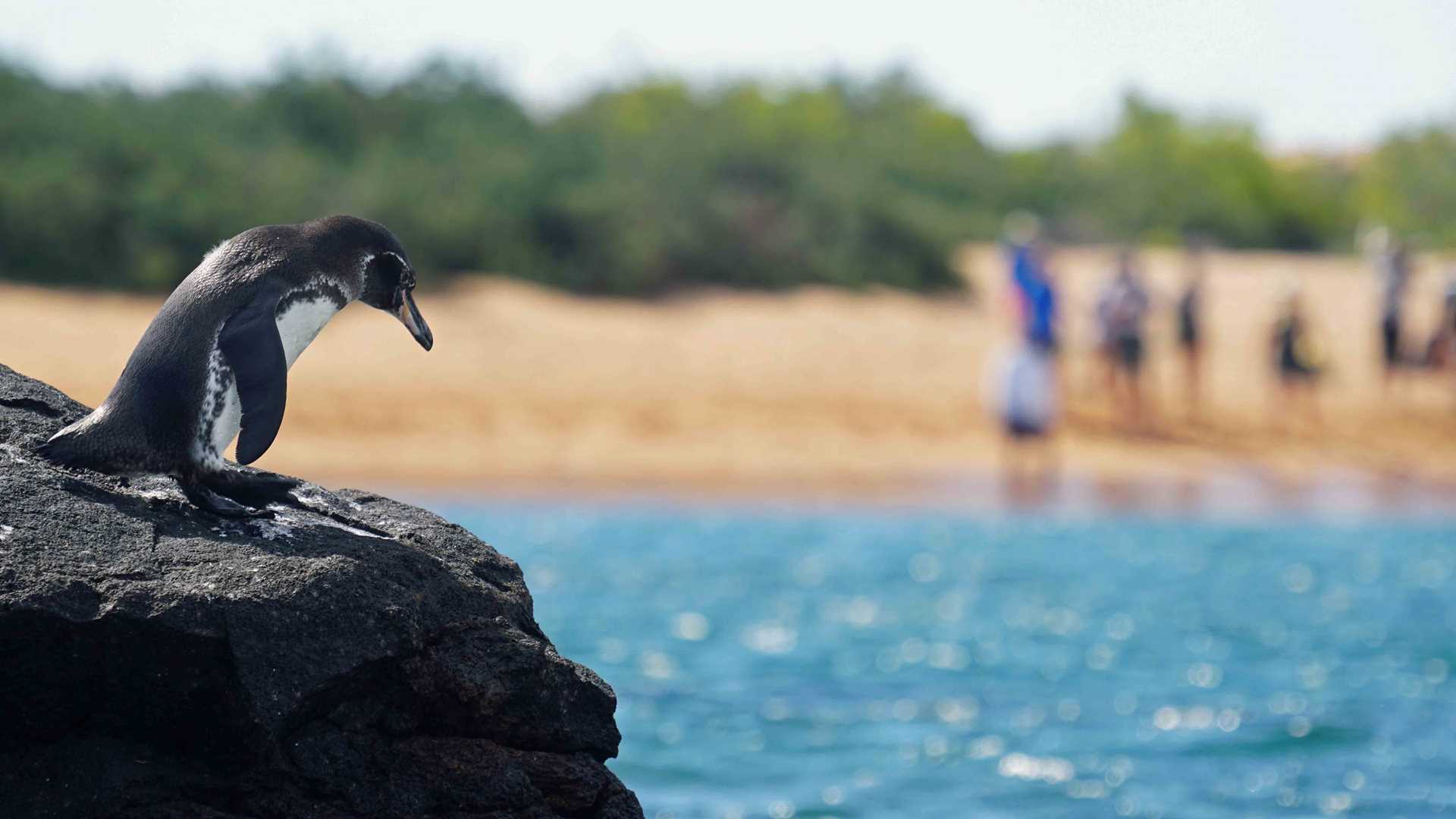Today, we woke early in the morning to explore of the most famous island of Galapagos, known for its unique topography and moonscape, with many volcanic formations and a legendary iconic monument called Pinnacle Rock.
Our day started with a hike to the summit (359 feet, 120 meters, in elevation) of Bartholomew Island, the only island of the Galapagos that was named after a naval officer below flag-rank. Its eponym is Captain David Ewen Bartholomew, who entered the Royal Navy in 1794 following his impressment from a merchant ship.
This small island shows a unique volcanic moonscape of rust-colored spatter cones, contrasting with large pale tuff cones, sooty lava flows and small collapsed lava tubes. The erosion over time has created amazing features in the soft volcanic ash. In a unique biological perspective, this is one of the best examples of primary succession, where life is taking over a pristine terrine for the first time. The hostile dramatic scenario inspired Darwin to say the geology of Galapagos well deserves attention, it seems to be the land where life started.
After breakfast, it was time to visit one of the golden sand beaches, where we had the chance to explore the surrounding waters in the search of sharks, penguins, sea lions, rays and a wide variety of fish.
At around 3:00 p.m. we anchored close to Sombrero Chino and the Bainbridge Islets. These interesting, small volcanoes probably formed when the sea level was lower, as parasitic cones of Santiago or James Island. Soon we dropped anchor near Chinese Hat and went snorkeling off the coast of the young lava fields of Santiago Island. We had an incredible time in the water, followed by a Zodiac ride around the same snorkeling area, but this time to photograph Galapagos penguins and other shore birds with the golden light of the equatorial sunset.







